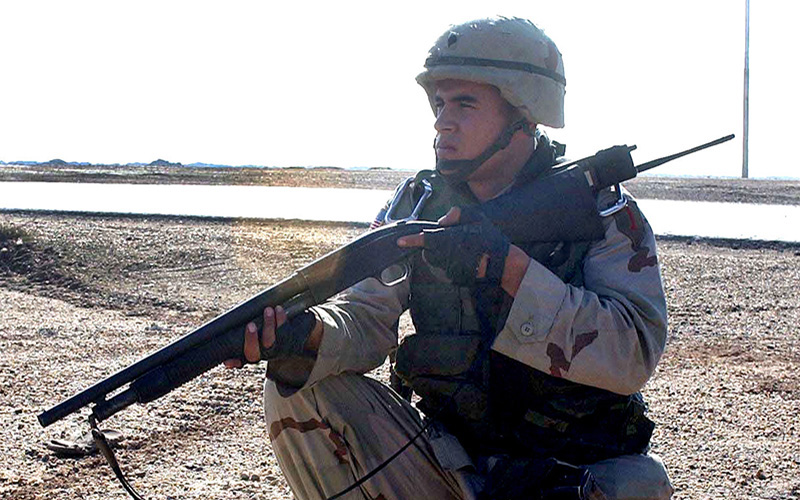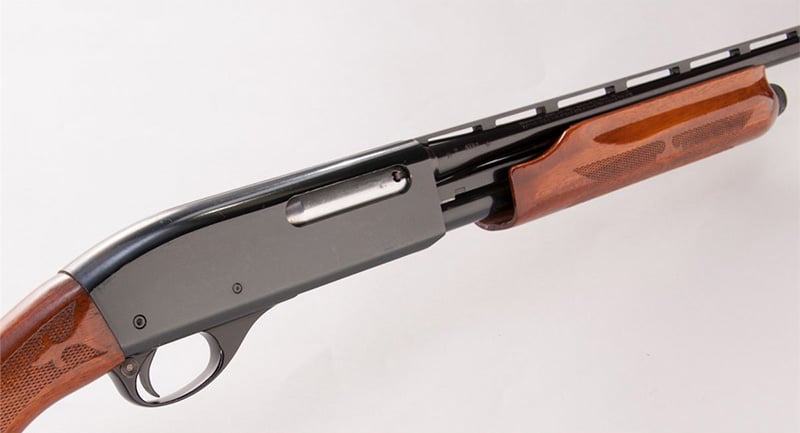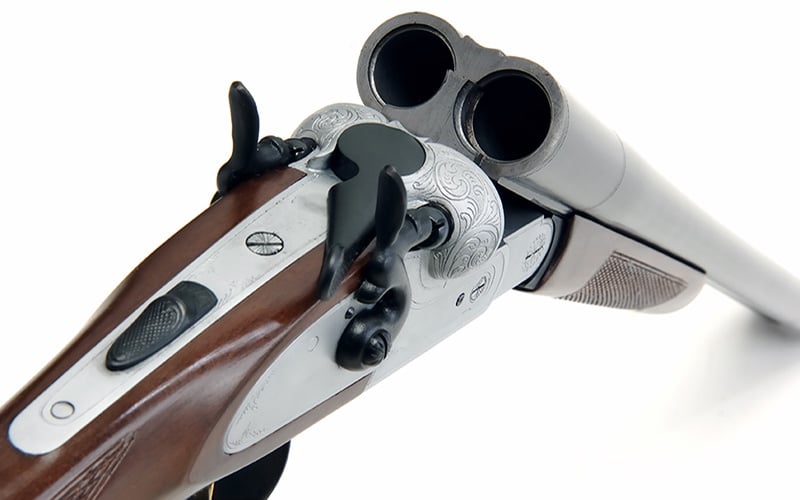
Last Updated on
Although the world of modern firearms offers thousands of different options, very few guns can stand toe-to-toe with the raw power, extreme versatility and true effectiveness of the shotgun. However, due to a wide array of available options, choosing the right shotgun for you can be overwhelming. This article will give you a great start towards finding the perfect shotgun.
From shooting sports and hunting to home defense and law enforcement, the shotgun is constantly evolving and adapting to secure its role in many different applications. The modern-day shotgun meets the demands of all these applications through a wide variety of options.
Although the abundance of options available also makes the process of choosing the shotgun for you quite a challenge, you can make it a little easier by breaking the shotgun down into some of its most basic elements.
Caliber
The caliber, or gauge, of a shotgun is probably the first factor you want to consider when searching for the right one for you. Starting with the largest gauge, the standard options range from 10 to .410. For your first shotgun, a 12 gauge is most likely the best fit. This is the most common option and offers the cheapest ammunition. The 12 gauge shotgun is also very versatile and handles almost any target shooting or hunting application. The other options include:
10 Gauge
The 10 gauge represents the largest legal caliber available in the United States. It produces a very strong recoil and makes the shotgun quite heavy and hard to handle. Due to the optimization of the 12 gauge shotgun and other firearms, there are very few practical applications for the 10 gauge shotgun today. Goose hunting may be the only exception.
16 Gauge
When it comes to waterfowl hunting, the 16 gauge may be the perfect caliber. As a solid compromise between the popular 12 gauge and the lightweight 20 gauge, the 16 gauge packs enough punch to bring the birds down without the heavy recoil that comes with the higher calibers. On the other hand, 16 gauge ammunition is much harder to find and more expensive than both the 12 and 20 gauge ammo.
20 Gauge
The 20 gauge is commonly recommended as a starter or youth shotgun. While the 20 gauge may not cut it for larger game, it offers just enough power for small game hunting, upland hunting and shooting sports without killing your shoulder with a strong recoil.
28 Gauge
The 28 gauge represents the smallest caliber available that maintains the basic capabilities a shotgun is known to offer. It produces a very low recoil and very light shot. However, the 28 gauge shotgun is not ideal for shooting sports, and it won’t handle anything but the smallest game.
.410 Caliber
Also known as “67 gauge,” the .410 shotgun really acts more like a bullet than a shotgun shell, but it produces almost zero recoil. It can be a good option for the youngest of your shooters or, for some adults, it offers a great challenge for shooting clays.
Action
The action of a shotgun determines how a shotgun shell will be moved into position and fired. There are three basic types:
Pump Action
Since a pump action makes you do all the work, it is commonly the cheapest option. Other actions use mechanics to cycle through rounds, but pump action shotguns require the shooter to manually “pump” through the process. The extra time it takes to perform this manual process can also make a big difference out in the field. However, the pump action is also widely known to be the most durable and reliable option, regardless of wet, dirty or swampy conditions. It is more popular in the United States than in any other country and represents what most American’s think of when they think shotgun.
Break Action
Break action shotguns come in two general types: the “over/under” and the “side by side.” The over/under break action stands at the top of the clay target shooting world. To load shells in an over/under, the shooter breaks the gun open at the end of the barrel. Almost all over/under shotguns offer a single trigger that fires each barrel separately. The mechanics on over/under break action shotguns are actually quite simple, easy to maintain and very reliable. The double barrel also allows you to utilize two different chokes for shooting at different distances.
Side by side break action shotguns are typically less expensive than over/unders and offer a unique style to shooters looking for something different. They work a lot like over/under shotguns when it comes to the actual break action element, but may have two triggers instead of one. Some shooters dislike the way they feel for target shooting and few offer choke tubes. While single barrel break-actions do exist, they have become almost completely obsolete due to the pump and semi-automatic options.
Depending on the manufacturer, make and design, break action shotguns can cost less than a semi-automatic or more than your house, and when it comes to safety, break actions are widely known as the safest shotgun type do the inability to fire with an open action.
Semi-Automatic
Semi-automatic shotguns automatically load shells from the magazine tube after each trigger pull. This action allows hunters to fire multiple shots very quickly. Most semi-auto shotguns hold between two and eight shells. Although semi-autos typically cost much more than pump actions, the mechanics of a semi-auto allow it to take some of the recoil off of your shoulder and use it to chamber the next shell.
A semi-auto shotgun is a great choice for seasoned shooters who do a lot of hunting and target shooting, but the gun’s high price tag, tendency to jam and more difficult maintenance requirements scare some shooters away.
Barrel Length
Considering the importance of barrel length to the shooting experience, it is surprising that many buyers overlook this option. Many also make the common mistake of assuming that longer barrels result in higher accuracy and more consistent shot patterns. Although this misconception holds a bit of truth for professional shotgun sportsmen who can make use of very minute differences, 99 percent of shooters won’t even notice them.
Ranging from 24” to 32”, barrel length can make a big difference in the overall weight of the gun. Any extra weight will make a big difference if you plan on carrying your shotgun for any distance while hunting. For this reason, longer barrels are more common in target shooting applications where many believe the extra length allows the shooter to more easily track the clay. More barrel length also helps compensate for recoil during long target shooting competitions. Most shooters use a 26” or 28” barrel as a compromise for between weight and the benefits of length.
Stock
Most first-time shotgun buyers forget to consider the stock when shopping for the right gun. Although many will try to get a feeling for the gun by mounting it as if they were about to fire, it is important to understand the correct way to do this in order to find the right fit.
When first mounting a new shotgun, always lift the gun to your cheek and shoulder. You can never get the right fit by bringing your cheek down towards the stock. In fact, it is best to close your eyes, place the butt of the gun on your shoulder, lift the gun to a 45 degree angle and gently rest it on your cheek. Then you can open your eyes and maneuver the weapon into the right shooting position. This process gives you the natural aim point and mount of the shotgun. If it doesn’t feel right for you, move on to another gun.
Materials
The shotguns of today are made from a few different materials. Most shotgun stocks and grips are made from synthetic plastic, wood or rubber. Barrels are usually available in stainless steel, “blued,” or with some kind of coating such as “camo.” The materials of your perfect shotgun depend on your own personal preference.
Most target shooters use wooden stocks, but synthetic stocks can be an excellent option for increased durability and reduced maintenance. When it comes to barrel materials, stainless steel will be the most expensive and the heaviest. “Blued” barrels are the most common, but require oil after every use to prevent corrosion. Coated barrels are the easiest to maintain, but depending on your style, may not look quite as good as the others.
At the end of the day, a little research goes a long way when trying to choose the right shotgun for you. However, it is also important to go into the store to ask questions about each gun and to feel the different options in your hands. It may be a long process, but once you find the right one, you will have a reliable shotgun you can enjoy for decades to come!








Comments (0)
Shooting Sports 101: An Overview of Trap, Skeet, and Clay Shooting | The Blog of the Gritr Sports Storesays:
March 31, 2015 at 5:11 pm[…] of the most important steps to becoming a better clay-target shooter involves choosing the right gun to fit you. This is essential to your comfort and accuracy on the range. Once you’ve found a gun […]